What I learned at Vogue’s ‘Forces of Fashion’ event
Vogue editor-in-chief Anna Wintour said she founded “Forces of Fashion” in 2017 to introduce the idea of conversations between Vogue and leading designers who were forces in fashion.
“As we work through the pandemic, it became very obvious that it was super-important for us all to be talking together so we could discuss the obstacles that we're all facing,” she said. “This particular Forces is one where we're really going to look at the world of fashion as it emerges from the pandemic globally.”
This year the conference was held online from July 7 to 8. Here are my top takeaways from the event.
Anna Wintour: ‘We believe in sustainability, diversity and inclusivity’
Three Vogue editors-in-chief met to talk about their magazine, its role today, its future and about life in fashion: Anna Wintour, Vogue’s global editorial director and global chief content officer for Condé Nast; Edward Enninful, EIC of British Vogue; and Margaret Zhang, the newly appointed EIC of Vogue China. Vogue Runway contributing editor Luke Leitch moderated the conversation.
Wintour said that what they’ve been exploring over the past year and a half is how to capitalize on Vogue’s global reach and power while respecting the local cultures, sensibilities, ideas, and trends of countries they work in.
“It’s about building the Vogue community around the world and sharing our values,” she said. “We believe in creativity, respect for each other, sustainability, diversity and inclusivity.”
Enninful said it was incredible to see Fashion Weeks in countries like Lagos and South Africa.
Zhang said, “What’s been distilled over the past year is to really see how much people can collaborate, and what can be achieved when people actually work together.”
I think it’s the embrace of diversity and inclusivity that fashion can be for everybody, not just a select few. To me it’s a very inclusive moment in a way that we haven’t seen before.
Whereas before the pandemic a young designer had to work really hard to save money to have a show, now there’s a certain fearlessness, Enninful observed. “You can present a video, you can have a performance, you can have a show, anything goes. COVID has equalized everything.”
Added Wintour, “When you’re sitting on Zoom all day long, looking at those black boxes is very democratic.”
Leitch asked them about the best fashion shows they’d ever seen, and Wintour cited the late Karl Lagerfeld’s extravaganzas for Chanel: “Whether we were in the supermarket or in the forest or on a plane — Air Chanel — taking off, he understood that a fashion show reached a larger audience and had more of an impact if it was a complete experience.”
Enninful said for him it was John Galliano’s show in 1992, where Kate Moss walked the runway for the first time.
Zhang said her favorite shows were those in which she could see the creative director’s consciousness in depth, like Dries Van Noten spring-summer 2017 with Azuma Makoto’s melting floral ice sculptures.
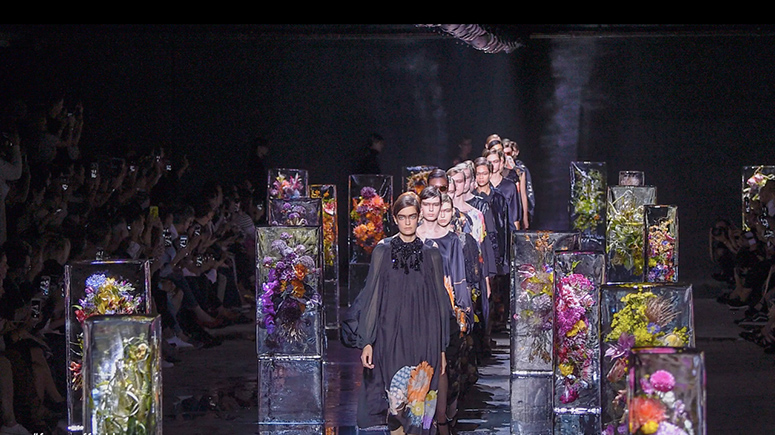
Wintour noted that people had been telling her they missed physical shows for the human connection. “As we do emerge in September, obviously the fashion show is going to be reinvented in that it will probably be smaller, more intimate, but livestreamed in a way that people hadn’t thought about pre-COVID.”
Zhang broke the news that she was holding an open casting for the cover of her first issue, Vogue’s iconic September edition. “In the vein of this democratization of creative communication, our team and our scouts are scouring China and other parts of the world right now for that next incredible face and personality,” she said. “And I’m so excited to be able to hear their story and learn from them and really amplify what it is that they stand for.”
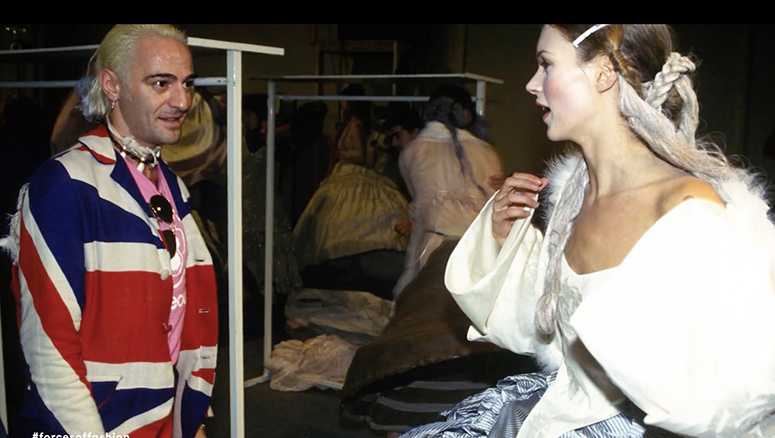
Enninful revealed that for the first time all the Vogues are working on a special theme and cover for the September issue that will mark a new beginning across all platforms: videos, social media, digital and print. “We’re really asking our teams: who are the upcoming creatives in your market that we can be working with and amplifying their work and voices across all of our markets?”
“I think it’s the embrace of diversity and inclusivity that fashion can be for everybody, not just a select few,” Wintour concluded. “To me it’s a very inclusive moment in a way that we haven’t seen before.”
Billie Eilish: ‘Changing doesn’t mean I’m a different person’
For those who thought that matching their COVID mask to their outfit was an original move, Billie Eilish would like you to know that she did it first, thank you very much.
“It’s really funny because when COVID happened I was like, this is nothing new for me. I’ve been wearing masks for years as a fashion statement,” she laughs.
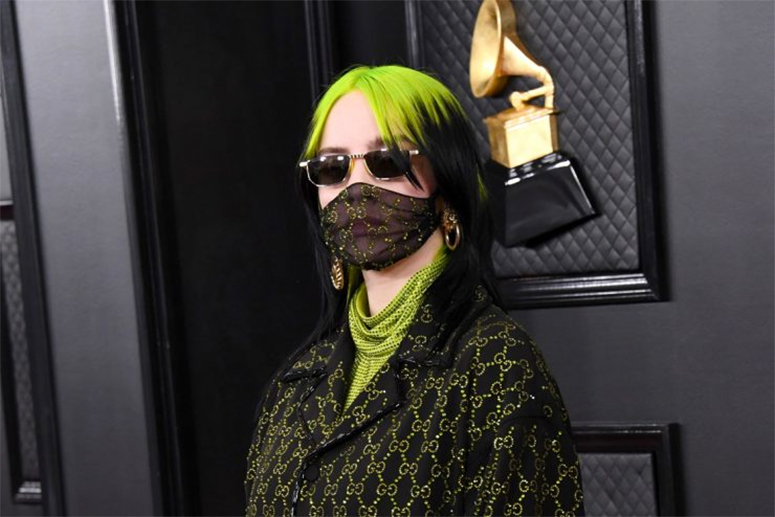
For Vogue Forces of Fashion, the Grammy-winning singer-songwriter had a conversation with her all-time favorite designer and close friend, Gucci creative director Alessandro Michele, with whom she’s collaborated on some of her most memorable outfits — masks and all.
“Correct me if I’m wrong, but I don’t think we’ve ever made an outfit without a matching mask to it,” Eilish told Michele. “A mask before COVID obviously was a very large-scale accessory. It’s there; it’s your face. And it’s funny, I saw a couple things in COVID that some people would wear a mask that matched the outfit and then they’d be like, ‘Oh my God, why has nobody ever done this?’ I’m like, excuse me!”
Vogue.com editor Chioma Nnadi moderated the conversation between the songstress, who was in Los Angeles, and Michele, who was in Rome. Eilish said she would call Michele at 12 midnight her time whenever they were collaborating on an outfit. “He just tells me I look cute and that’s it — it’s really cute,” she laughs. “The process is very natural and, like, pleasant. I feel like it’s very pleasant to work with Alessandro.”
The feeling is mutual. Michele says, “The way she sings, and the way she lives life is a beautiful ode to life. I love to dress her, and we share secret things.”
Though they won’t reveal what those secret things are, Michele says possibly their favorite collaboration was on her Grammy outfit, where Eilish’s mask matched both her black-and-chartreuse getup and hair. “I like when she loves to be shining and sparkly,” Michele says. To Billie he said, “You had this idea that was unbelievable.”
Michele’s love for sparkle was ignited by his mother and aunt, who worked in TV and cinema and would bring home glittery costume scraps for him to experiment with. “Everything came from that, my obsession with things that shine, that make you look fabulous and quirky and strange.”
I like men’s shoes, men’s shirts and pants and every time I go to a store or thrift store I’d always just go on to the men’s section because that’s what I felt comfortable and confident in.
Eilish grew up not feeling comfortable in clothes young women were “supposed” to wear. “I like men’s shoes, men’s shirts and pants and every time I go to a store or thrift store I’d always just go on to the men’s section because that’s what I felt comfortable and confident in.”
Her penchant for wearing androgynous baggy outfits endeared her to youngsters who didn’t conform to specific gender roles, though when she recently switched personas to more conventional, feminine glamour, she got flak for it.
“Something that’s so important to me is making sure that everybody knows that people change,” she says. “It’s all I want to talk about. Changing doesn’t mean I’m a different person; it just means that you change and you learn and you grow, and that’s how life is.”
Balenciaga resurrects couture for the modern customer
Demna Gvasalia’s couture debut for Balenciaga made a lot of noise, which was ironic since his show was held in complete silence, with no music to mask the sound of fabric swishing, the floor creaking, and the audience shifting.
“I know that Cristobal had silent shows and in general liked to work in silence, so for me it was very natural to think of that as the soundtrack of the show because I wanted really the clothes to speak for themselves,” explained the Balenciaga creative director.
Since Cristobal Balenciaga shuttered his couture house in 1968, Vogue Runway director Nicole Phelps asked Gvasalia why he wanted to reopen it.
“Simply because couture is the essence of Balenciaga,” he replied. “It's really its starting point, not a bag, not a sneaker, not a logo T-shirt — all of which by the way I love designing and it's part of the vocabulary — but this highest level of craftsmanship, the silhouette, the architecture of the garment — everything that is in the foundation of this house.”
He also felt ready to break out of the streetwear box the industry had put him in: “There was this part of me that always existed even before I started doing fashion that I needed to manifest, and couture was the best platform for that.”
Like many before him tackling the weight of a legendary fashion house, Gvasalia went back to the archives to study Balenciaga’s legacy and understand his creative mindset. “I didn't want it to become a tribute, but rather my vision of couture today in 2021 infused by the heritage of this couturier that to me is still the master of us all.”
Since Gvasalia doesn’t draw, his favorite part of the process was “having scissors and pins and cutting those pieces and sculpting silhouettes and shapes out of them.”
In his search for the Balenciaga couture customer of today, Gvasalia offered a range of pieces, from daywear like jeans, hoodies and trench coats to formal wear to the finale wedding dress that ended up being a straight-up tribute to the founder of the house.
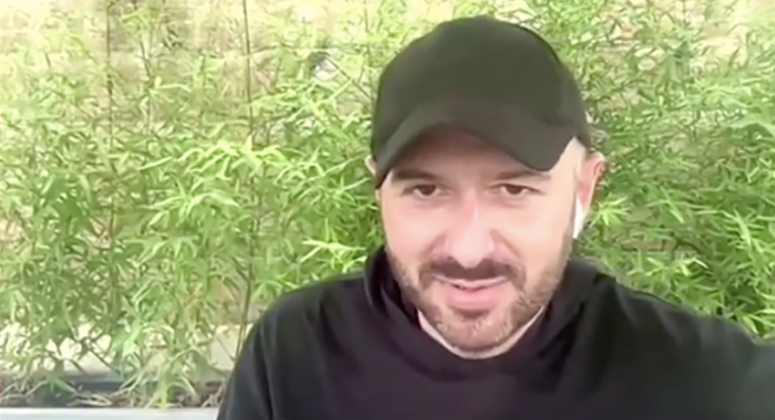
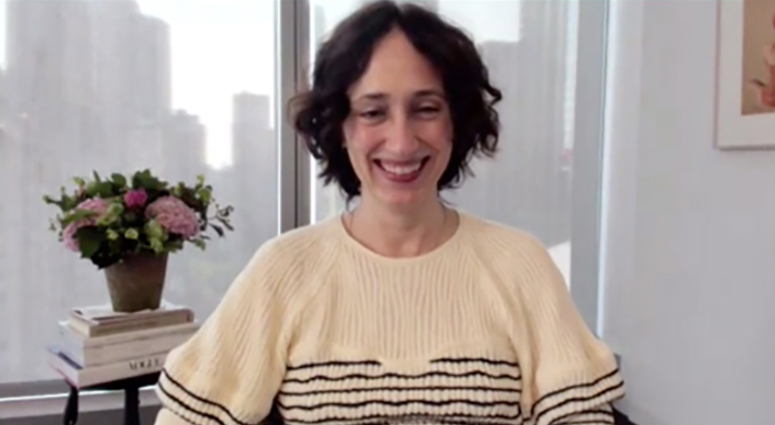
“The wedding dress is pretty much identical to the original, even though we tried to change it to find a more clever or normal way of putting darts and things,” Gvasalia admits. “He did this dress over 55 years ago in a way that we cannot even reinterpret better today. It's the best; it's as close to perfection as you can get. He invented minimalism and it is already modern and even more than that, it's futuristic.”
Gvasalia feels couture will always be relevant because it offers a customer the fit, quality and experience ready-to-wear will never be able to match: “What I really always loved about fashion and making clothes is the way clothes make us feel and transform us,” he says. “It's hard to experience today because we make too much products in a very short period of time, but couture is the place in which this magic is preserved.”


